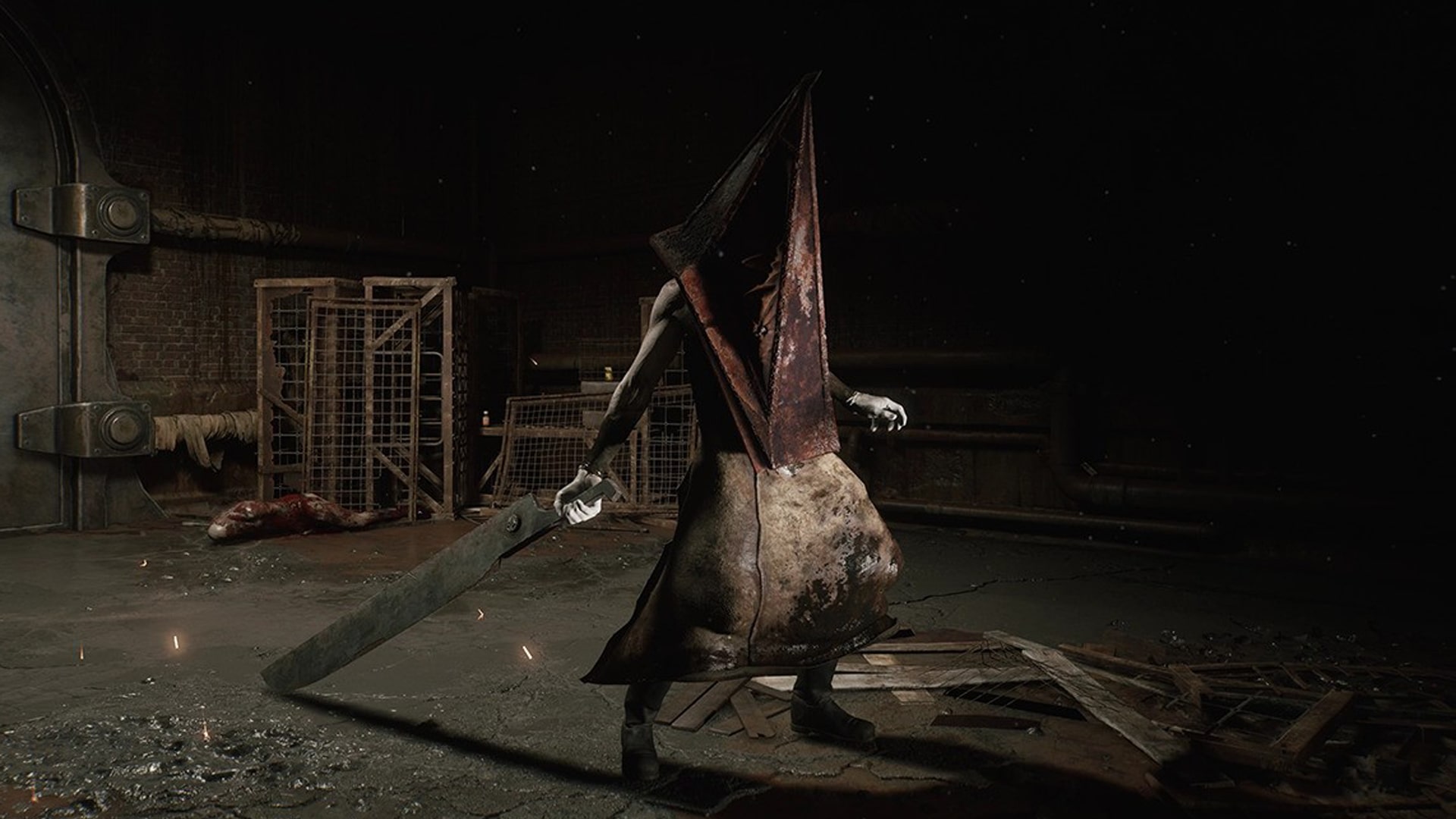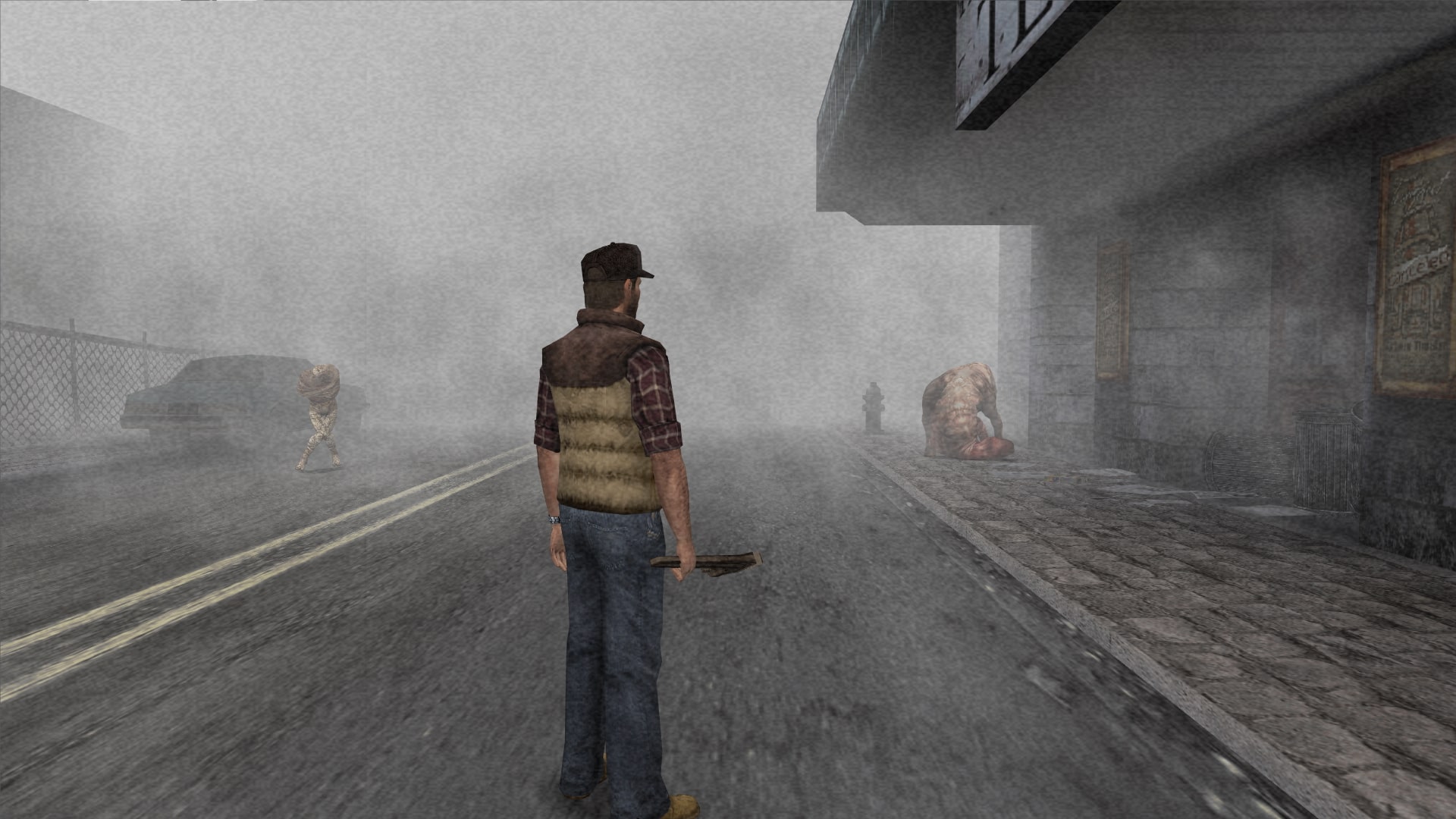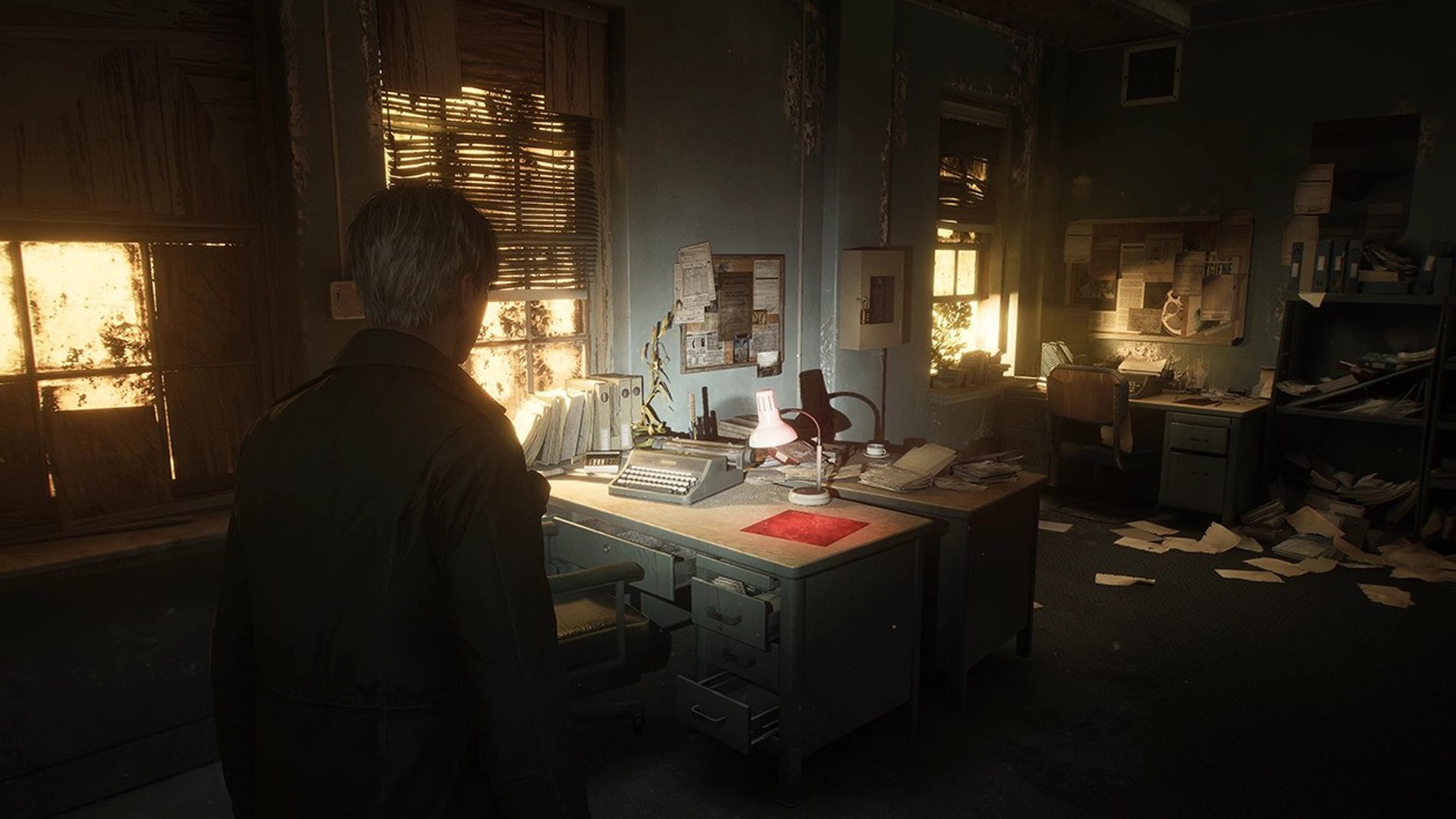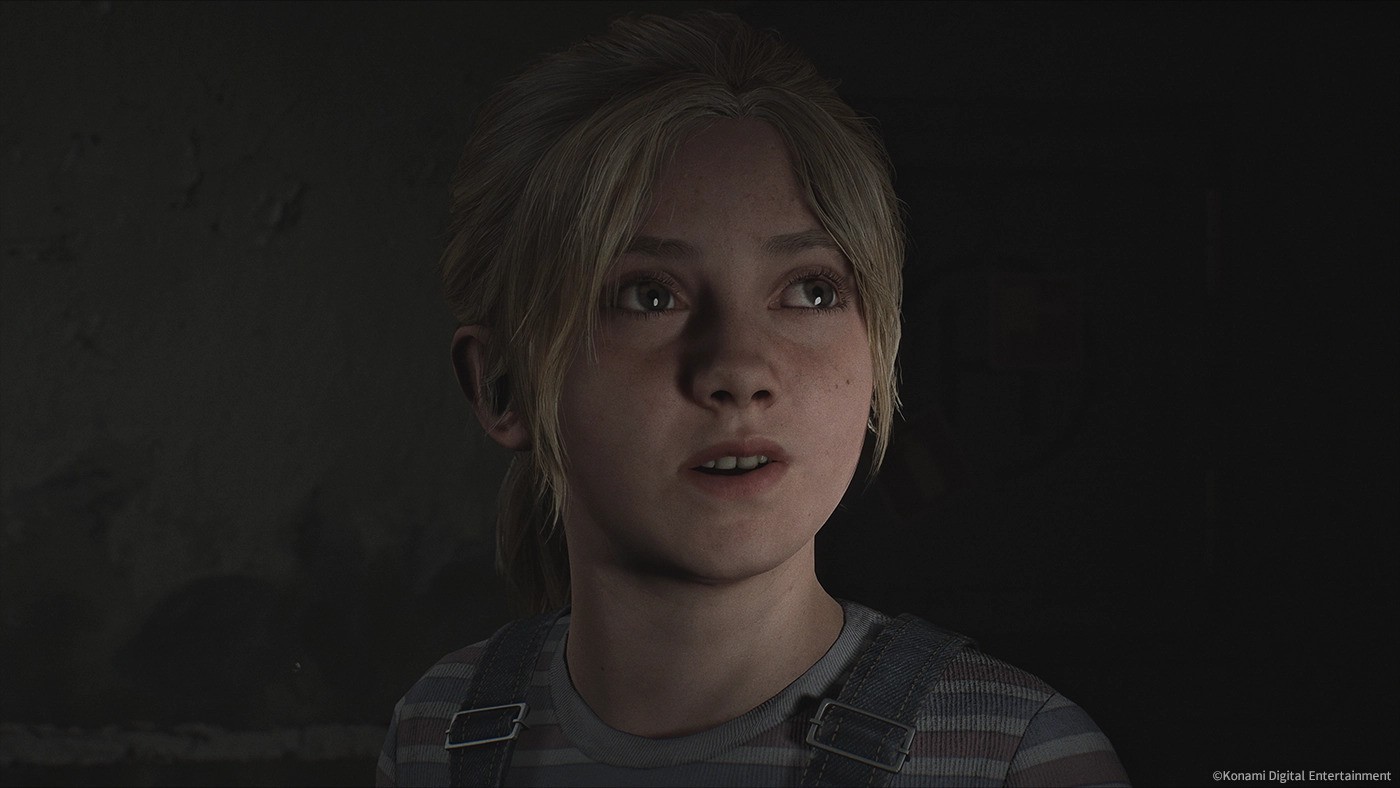Silent Hill: A Comprehensive Journey Through Horror
Silent Hill is a highly influential survival horror game famous for its eerie atmosphere and complex story. This article will guide you through its haunting plot, innovative gameplay, and enduring influence on the horror genre.
Key Takeaways
- Silent Hill features a gripping storyline centered on Harry Mason’s search for his missing daughter, blending psychological horror with player-driven narratives through multiple endings.
- The game combines exploration, combat, and puzzle-solving mechanics, requiring strategic resource management and critical thinking to uncover the dark secrets of Silent Hill.
- Acclaimed for its haunting audio and visual design, Silent Hill’s atmosphere, created by Akira Yamaoka’s music and detailed environmental art, has left a lasting impact on the survival horror genre.
Listen To The Podcast (English)
Disclaimer: The links provided herein are affiliate links. If you choose to use them, I may earn a commission from the platform owner, at no extra cost to you. This helps support my work and allows me to continue to provide valuable content. Thank you!
Introduction to Silent Hill

Silent Hill is a survival horror video game developed by Team Silent and published by Konami. Released in 1999 for the PlayStation, it has since become a cult classic, captivating players with its chilling atmosphere and intricate narrative. The game follows Harry Mason, a single father who embarks on a harrowing quest to find his adopted daughter, Cheryl, in the haunted town of Silent Hill. As Harry confronts monsters and navigates through the fog-laden streets, players are drawn into a world of psychological horror and suspense.
The game gained Silent Hill recognition in the gaming industry by selling over two million copies and becoming part of the American PlayStation Greatest Hits budget releases.
The game is renowned for its puzzle-solving gameplay, which requires players to think critically and explore their surroundings meticulously. Each puzzle solved brings Harry closer to uncovering the dark secrets of Silent Hill, making the experience both challenging and rewarding. The combination of eerie environments, terrifying monsters, and complex puzzles has solidified Silent Hill’s place as a cornerstone of the survival horror genre.
The Original Silent Hill Game

Released in 1999 for the PlayStation console, the original Silent Hill game was a groundbreaking entry in the survival horror genre. Developed by Team Silent and published by Konami, it captivated players with its eerie atmosphere, engaging storyline, and challenging gameplay. The game follows Harry Mason, a single father who embarks on a desperate search for his adopted daughter, Cheryl, in the haunted town of Silent Hill. As Harry delves deeper into the town, he uncovers a dark conspiracy involving a cult, supernatural entities, and a mysterious figure known as Alessa.
Harry Mason’s journey is fraught with danger and psychological horror, as he confronts nightmarish creatures and unravels the town’s sinister secrets. The game’s narrative is rich with twists and turns, keeping players on the edge of their seats as they guide Harry through the fog-laden streets and eerie environments of Silent Hill. The original Silent Hill set the stage for a series that would become synonymous with psychological horror and immersive storytelling.
Storyline Overview
Silent Hill’s story starts with Harry Mason, a widower who enters the eerie town of Silent Hill with his adopted daughter, Cheryl, seeking solace after his wife’s tragic death. Their trip turns nightmarish when car troubles cause a violent car crash, leaving Cheryl missing and the town enveloped in fog. Desperate to find his daughter, Harry faces monsters and uncovers the town’s grim secrets.
As Harry searches for Cheryl, he encounters various characters, each with their own mysterious motives and connections to the town’s sinister history. The plot thickens as Harry delves deeper into the town’s dark past, revealing a web of psychological and supernatural horrors that blur the line between reality and nightmare, especially as Harry defeats monsters. Harry passes through key moments in the narrative, encountering mysterious phenomena and interacting with other characters. In this chilling narrative, Harry witnesses traumatic experiences and disturbing revelations that significantly impact his quest to rescue his daughter.
Developed by Team Silent, Silent Hill is more than a game; it’s an experience blending psychological survival horror with an immersive narrative. The first installment lays the groundwork for a series celebrated for its complex characters and chilling atmosphere.
Multiple Endings
One of the most compelling aspects of Silent Hill is its multiple endings, which are determined by the player’s choices throughout the game. With a total of five possible endings, the game provides a varied narrative experience that keeps players engaged and invested in the outcome of their journey.
The Good and Good+ endings are considered canonical, offering a sense of closure to Harry’s harrowing quest. In contrast, the Bad endings present darker, more unsettling conclusions.
These variations showcase how player decisions can significantly impact the narrative, adding layers of replayability and depth to the game’s story.
Gameplay Mechanics
Silent Hill’s gameplay mixes combat, exploration, and puzzle-solving, offering a multifaceted experience. Titles like Silent Hill were made available on the PlayStation Portable, highlighting the versatility and accessibility of these classic games across different Sony platforms. Players navigate Harry Mason through foggy streets, face monsters, and discover hidden secrets. The game was also made available for download on the PlayStation Store for the PlayStation Portable and PlayStation 3, while noting its unavailability for other platforms like the PlayStation Vita and PlayStation 4. The game excels at balancing these elements, ensuring a consistently thrilling and immersive experience.
The game’s mechanics are designed to heighten the sense of tension and urgency. Harry’s heartbeat and health status are indicated by controller vibration, creating a visceral connection between the player and the character’s physical state. This immersive feature adds another layer of realism to the already tense atmosphere.
Silent Hill’s gameplay extends beyond survival; it immerses players in a world where every decision matters, every corner harbors a threat, and solving puzzles brings you closer to uncovering the town’s dark secrets.
Combat System: Harry Confronts Monsters
In Silent Hill, resource management is crucial. Players face limited ammunition and weapon durability, requiring strategic engagement with monsters to survive. Whether using melee weapons or firearms, players must carefully consider their approach to combat, as monsters can get back up if not finished off after being knocked down. Harry collapses; Harry escapes.
The combat system in Silent Hill emphasizes the need for careful planning and execution. Melee attacks involve swinging weapons, while firearms require precise aiming to effectively deal with enemies. This strategic element adds an extra layer of depth to the gameplay, making each encounter a test of skill and resourcefulness.
Puzzle Solving
Puzzle-solving is a key component of Silent Hill’s gameplay, requiring players to think critically and explore their surroundings thoroughly. These puzzles are not just obstacles but integral parts of the story, unlocking new areas and revealing more about the town’s dark history.
The challenge they present adds to the overall immersive experience, making each solved puzzle a rewarding achievement.
Audio and Visual Design
The audio and visual design of Silent Hill play a significant role in creating its haunting atmosphere. While the voice acting in Silent Hill was noted to be an improvement over that of its Resident Evil counterpart, it was still generally considered poor, with long pauses between lines detracting from the immersive atmosphere. The use of fog and darkness is a hallmark of the series, enhancing the sense of dread and uncertainty as players navigate the town. Unusual item placements and the high-definition graphics of recent iterations further contribute to the game’s eerie ambiance.
The development team has employed innovative techniques to craft the game’s visuals, such as pre-rendered backgrounds and dynamic camera angles, which shift from the original fixed-camera view to an over-the-shoulder perspective in updated releases. These changes offer fresh explorative experiences while maintaining the game’s signature unsettling atmosphere.
Silent Hill’s visual design features distorted, surreal landscapes mirroring the characters’ psychological states. This meticulous environmental detail enhances the eerie atmosphere, deepening player immersion in the game’s world.
Silent Hill Original Soundtracks
Akira Yamaoka’s sound design is essential in crafting the psychological horror that defines Silent Hill. His compositions blend ambient sounds, electric guitars, and industrial drums, creating a unique and memorable auditory experience. Reviewers have praised the game’s sound design for its ability to enhance the eerie atmosphere, making it a standout feature of the series.
The combination of music and sound effects in Silent Hill results in an unforgettable horror experience that deeply resonates with players. Yamaoka’s work has introduced new immersive soundscapes, contributing significantly to the game’s dense and immersive atmosphere, including elements from the silent hill original soundtracks.
Environmental Design

The visual representation of Silent Hill features fog-laden streets and decrepit structures, reinforcing the game’s eerie ambiance. These elements are not just background details but integral parts of the game’s storytelling, reflecting the psychological states of the characters and adding depth to the overall experience.
Graphics and Visuals

The original Silent Hill game was a masterclass in atmospheric horror, thanks in large part to its impressive 3D graphics. For its time, the game pushed the boundaries of what was possible on the PlayStation console, using fog, darkness, and shadows to create a pervasive sense of tension and fear. The fog, in particular, became a hallmark of the series, obscuring the player’s vision and adding to the sense of dread as they navigated the town’s eerie streets.
The game’s visuals were also notable for their use of pre-rendered backgrounds, which added a layer of realism and depth to the environments. The character models and monster designs were meticulously crafted, with many considering them to be among the most terrifying in the survival horror genre. The grotesque and unsettling appearance of the monsters, combined with the game’s oppressive atmosphere, made Silent Hill a truly unforgettable experience.
Behind-the-Scenes and Development
The development of Silent Hill began in 1996, with the initial concept leaning towards a more action-oriented horror game. However, the development team, led by Keiichiro Toyama, soon shifted their focus to creating a more atmospheric and psychological horror experience. Drawing inspiration from Western horror movies, the team aimed to craft a game that would evoke a deep sense of dread and unease.
To achieve this, the team employed a blend of 3D graphics and pre-rendered backgrounds, creating the game’s signature eerie environments. The fog and darkness that envelop the town of Silent Hill were not just aesthetic choices but also technical solutions to the limitations of the PlayStation hardware, adding to the game’s unsettling atmosphere.
A crucial element of Silent Hill’s haunting ambiance is its soundtrack, composed by Akira Yamaoka. Released in Japan in 1999, the Silent Hill Original Soundtracks feature a mix of ambient and industrial music that perfectly complements the game’s tense and unsettling mood. Yamaoka’s compositions have become iconic, enhancing the psychological horror that defines Silent Hill.
Timeline and Chronology
The Silent Hill series boasts a complex timeline that spans multiple games, films, and other media, each contributing to the rich lore of the franchise. The original game is set in 1986, introducing players to the haunted town and its dark secrets. Seventeen years later, Silent Hill 2 takes place, offering a new story and characters while expanding on the town’s mythology.
Silent Hill: Origins, a prequel to the original game, is set seven years before Harry Mason’s harrowing journey, providing context and backstory to the events that unfold in Silent Hill. The film adaptation, released in 2006, exists in a different universe with its own timeline, reimagining the story for a cinematic audience. This film adaptation follows Rose as she begins her desperate search for her missing adopted daughter, Sharon, after a car crash leads to her disappearance.
The series’ chronology is further complicated by the multiple endings featured in each game, adding layers of replayability and depth. These varied conclusions allow players to experience different facets of the story, making each playthrough a unique and engaging experience. The intricate timeline and rich narrative of the Silent Hill series continue to captivate fans and newcomers alike, ensuring its lasting legacy in the survival horror genre.
Reception and Impact
Silent Hill received a favorable Metacritic score of 86/100, reflecting its critical acclaim and solidifying its place in the annals of video game history. The game sold over two million copies, contributing to its inclusion in the American PlayStation Greatest Hits and demonstrating its commercial success and widespread appeal. By selling over two million copies, the game gained Silent Hill recognition in the gaming industry, establishing it as a notable title in the American PlayStation Greatest Hits budget releases. The integration of haunting soundscapes with unsettling visuals created a deeply immersive horror experience that resonated with both players and critics alike.
The game’s ability to evoke feelings of dread and unease through its sound design and visual elements set it apart from other games in the genre. This unique blend of audio-visual storytelling has left a lasting impact on the survival horror genre, influencing countless other games and media.
Critical Acclaim
Silent Hill set itself apart from contemporaries like Resident Evil by utilizing real-time 3D environments, contributing to its positive reception. Most reviewers praised the game’s innovative approach and its ability to create a deeply immersive experience. This distinction helped Silent Hill gain generally positive reviews and establish itself as a seminal work in the genre.
Legacy in the Survival Horror Genre
By 2013, the Silent Hill franchise had sold over 8.4 million copies globally, cementing its place in survival horror. The series has expanded with seven more main installments, each enhancing the original game’s lore and mechanics.
Silent Hill’s influence reaches beyond video games, impacting other media and inspiring a generation of horror creators. Its innovative storytelling, atmosphere, and psychological horror set a benchmark in the genre, ensuring lasting relevance and appeal.
Impact on Popular Culture
Silent Hill has left an indelible mark on popular culture, particularly within the survival horror genre. Its influence is evident in numerous other horror games, including the Resident Evil series, which have adopted similar elements of psychological horror and atmospheric tension. The game’s innovative approach to horror has also permeated the film industry, inspiring filmmakers to incorporate its eerie and suspenseful techniques.
The success of Silent Hill led to the creation of several sequels, each expanding on the original game’s lore and mechanics. Notably, Silent Hill 2 and Silent Hill 3 continued to build on the series’ reputation for psychological horror and complex storytelling. The franchise’s popularity also resulted in a film adaptation released in 2006, starring Radha Mitchell and Sean Bean, which brought the haunting world of Silent Hill to the big screen.
Beyond video games and movies, Silent Hill has been referenced and parodied in various forms of media, including TV shows, music, and literature. The game’s iconic monsters, such as Pyramid Head and the Nurses, have become cultural icons, often appearing in other works as symbols of horror.
Overall, Silent Hill is a landmark game that has significantly impacted the survival horror genre and popular culture. Its legacy continues to influence new generations of horror creators and remains a beloved title among fans. The game’s ability to evoke fear and curiosity ensures its lasting relevance and appeal in the world of horror entertainment.
Trivia and Easter Eggs
Silent Hill is filled with intriguing facts and hidden details enriching its lore. One notable example is the humorous ending, contrasting sharply with the game’s typically dark and serious tone. These Easter eggs and trivia reward thorough exploration, adding depth to the experience.
Media Releases
The Silent Hill series has seen multiple special editions, including a Deluxe Edition of Silent Hill 2, which features a digital artbook and soundtrack. Pre-order bonuses like unique character masks further enhance player customization and engagement with the game. These special editions and re-releases have helped keep the series relevant and accessible to new generations of players.
Silent Hill’s influence extends beyond video games, with various adaptations including movies, a film adaptation, and tabletop games. In the film adaptation, Rose begins her desperate and horrific search for her missing adopted daughter, Sharon, after a car crash leads to her disappearance. The series’ success has also led to the creation of books and merchandise, allowing fans to immerse themselves further in the world of Silent Hill. These media releases and adaptations demonstrate the enduring appeal and cultural impact of the Silent Hill franchise.
Summary
Silent Hill stands as a testament to the power of storytelling and atmosphere in video games. From its intricate plot and multiple endings to its innovative gameplay mechanics and masterful audio-visual design, the game has left an indelible mark on the survival horror genre. The legacy of Silent Hill is not just in its sales figures or critical acclaim but in the lasting impact it has had on players and the genre as a whole.
As we conclude this journey through Silent Hill, we are reminded of the game’s ability to evoke fear, curiosity, and a deep sense of immersion. Whether you’re revisiting the town or exploring it for the first time, Silent Hill offers an experience that is both haunting and unforgettable. The fog may lift, but the memories will last a lifetime.
Frequently Asked Questions
Is Silent Hill based on a true story?
Silent Hill is inspired by the real town of Centralia, Pennsylvania, which has been affected by a continuous coal mine fire since 1962, leading to a drastic population decline. This haunting backdrop contributed to the atmosphere and themes of the game.
How many endings does Silent Hill have?
Silent Hill has a total of five possible endings, with the Good and Good+ endings regarded as canonical.
What are the core gameplay mechanics of Silent Hill?
The core gameplay mechanics of Silent Hill revolve around combat, exploration, and puzzle-solving, creating a tense and immersive experience for players. These elements challenge your skills and resources while deepening the atmospheric horror.
Who composed the music for Silent Hill?
Akira Yamaoka composed the music for Silent Hill, skillfully blending ambient sounds and industrial elements for a distinctive auditory experience.
How did Silent Hill set itself apart from other games in the genre?
Silent Hill set itself apart by leveraging real-time 3D environments and cutting-edge audio-visual design, delivering a uniquely immersive horror experience that stands out in the genre.
Useful Links
Death Stranding Director's Cut - A Comprehensive ReviewExploring the Emotional Depths of 'The Last of Us' Series
Exploring the Emotional Depths of 'The Last of Us' Series
Top Reasons Why The BioShock Franchise Remains Must-Play Games
Author Details
Mazen (Mithrie) Turkmani
I have been creating gaming content since August 2013, and went full-time in 2018. Since then, I have published hundreds of gaming news videos and articles. I have had a passion for gaming for more than 30 years!
Ownership and Funding
Mithrie.com is a Gaming News website owned and operated by Mazen Turkmani. I am an independent individual and not part of any company or entity.
Advertising
Mithrie.com does not have any advertising or sponsorships at this time for this website. The website may enable Google Adsense in the future. Mithrie.com is not affiliated with Google or any other news organization.
Use of Automated Content
Mithrie.com uses AI tools such as ChatGPT and Google Gemini to increase the length of articles for further readablity. The news itself is kept accurate by manual review from Mazen Turkmani.
News Selection and Presentation
The news stories on Mithrie.com are selected by me based on their relevance to the gaming community. I strive to present the news in a fair and unbiased manner.

